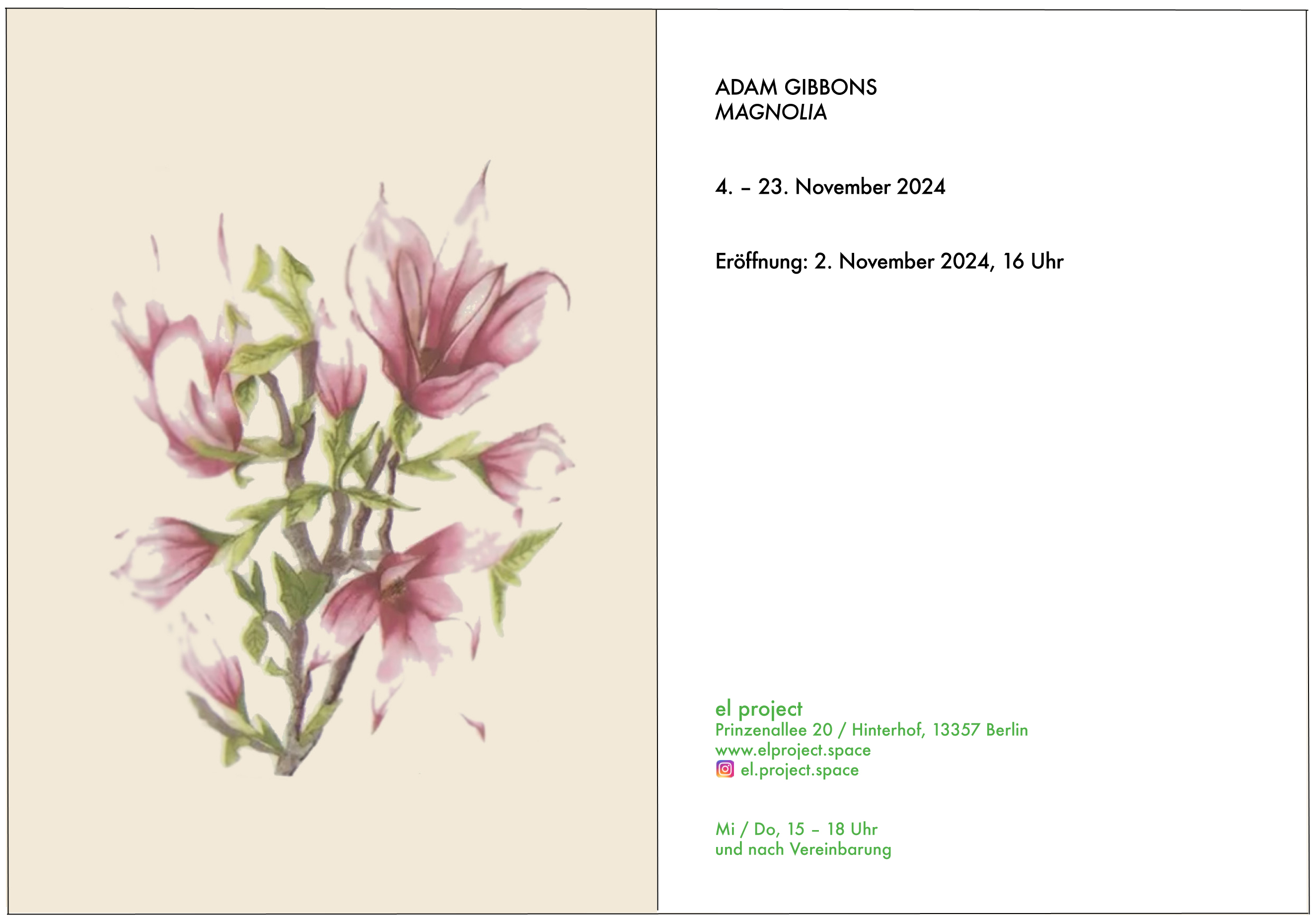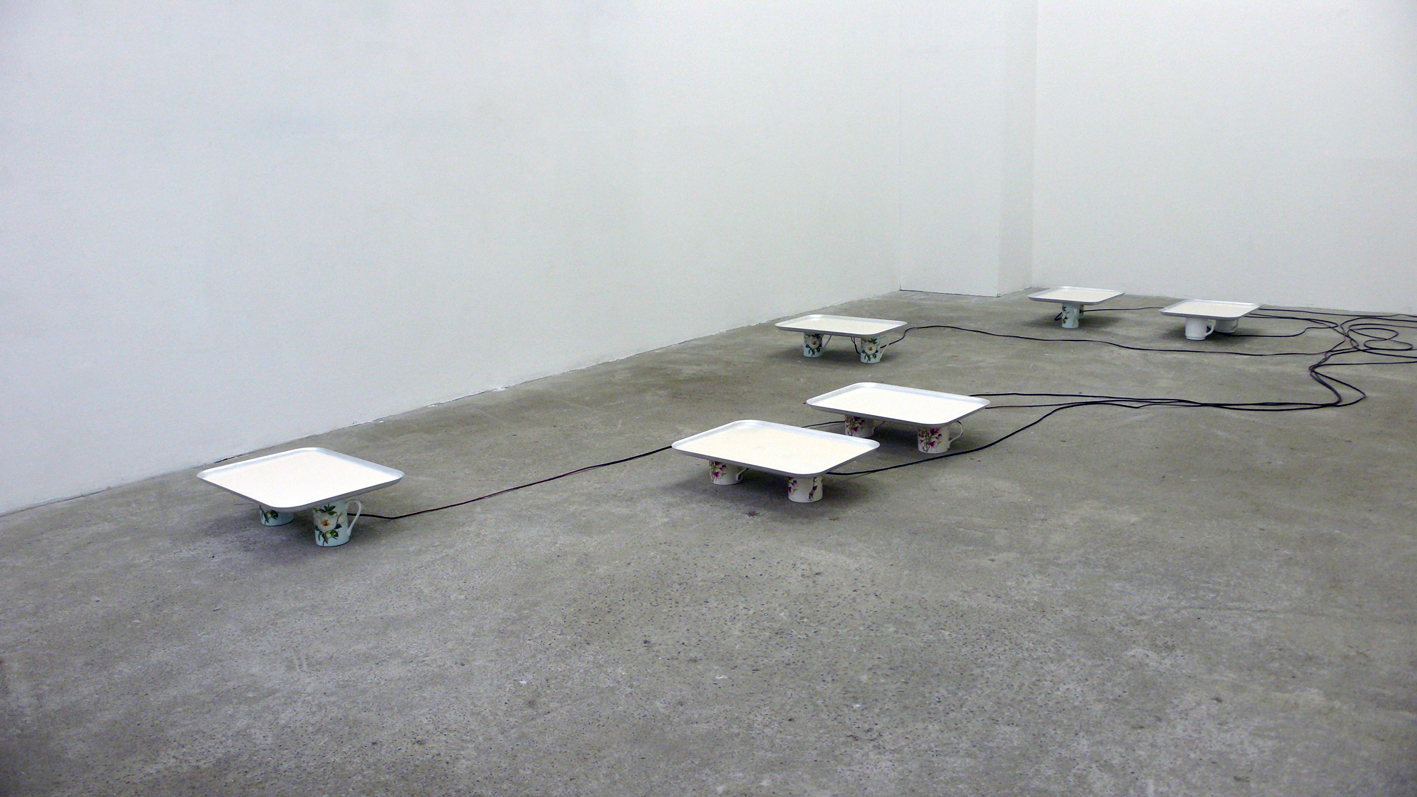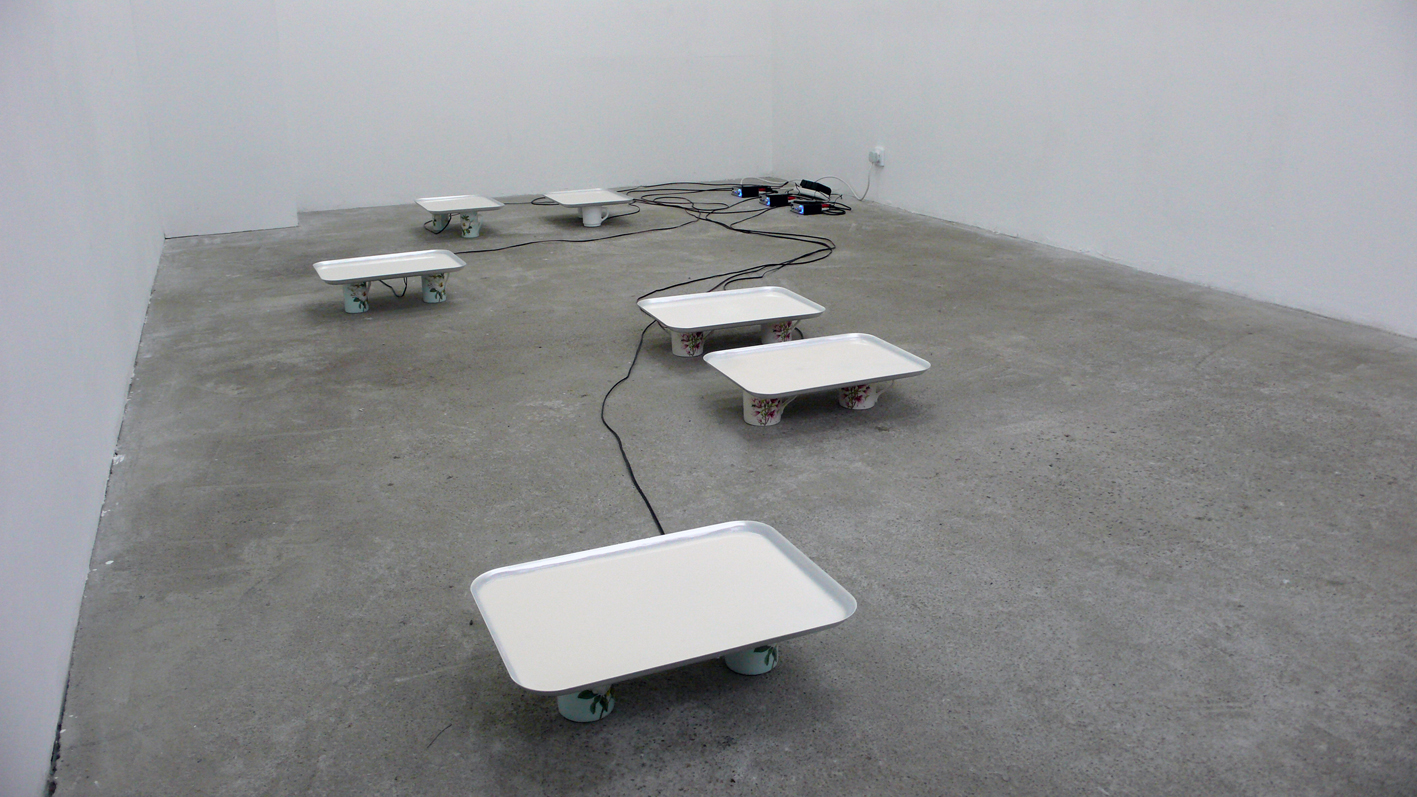ADAM GIBBONS
MAGNOLIA
4. - 23. November 2024
elproject.space

Six aluminium trays sit on top of floral tea cups on the gallery floor. The trays are filled with magnolia colour wall paint. Each tray emits the looping sound of the artist's voice doing a vocal warm-up.
The installation combines two narratives: the collective narrative of a social standard, a colour convention; and a personal narrative of childhood, one's own voice, one's body and one's self-assurance.
The vocal warm-up is something the artist learned from his mother who was a drama teacher and theatre director, and which he heard many hundreds of times in rehearsal rooms and drama studios throughout his childhood and adolescence. The warm-up generates a vibration emanating from the head to the throat, then to the chest, and eventually through the torso. At its most annunciated it comes out as not-quite-language. It's wanting to ask how to prepare to speak out.
Magnolia is the name of a domestic paint colour widely used in the UK since the 1950s which remains popular with property developers to the present day. In the UK more or less everyone - across demographics - would be familiar with magnolia paint. The house Adam Gibbons first grew up in, a semi-detached three bedroom new-build on the outskirts of a commuter town in the south of England, was painted magnolia.
It is most often found in mass-housing, and in institutional buildings like hospitals and community centres. It's the default colour. It's functional. It hides the stains. It is ubiquitous. These magnolias elicit a specific kind of familiarity which barely registers. They are associated with the standard, the middle, the non-decision.
Gibbons is interested in what purpose that default or middle serves. The standards which are maintained with systems like RAL (Reichs-Ausschuss für Lieferbedingungen und Gütesicherung) or BS (British Standard) are designed to operate very effectively in the distribution of property - they underwrite a particular kind of value - they offer a sort of certainty.
These standards appear to be self-contained but they aren't. What becomes obscured or overexposed in the production and reiteration of the standard? What does the standard prepare us for? As Sara Ahmed might say: "It matters how we arrive at the places we do". Gibbons wants to get close to these defaults in order to experience them emotionally.


